Published: 28 Aug 2020
Gold in comparison to other commodities
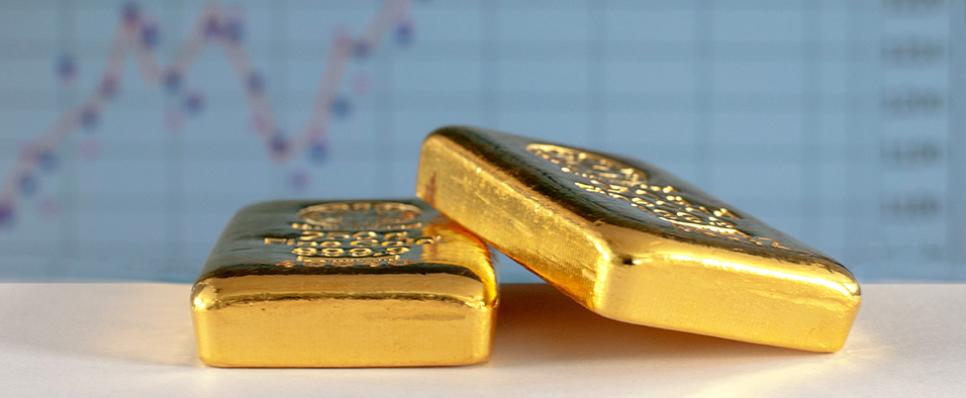
Gold's distinctive traits are what set it apart from other commodities, making it a safe-haven asset like no other. Historically, gold has delivered positive performance over the long term, because its minimal or negative correlation to performance of other assets.
Gold performs consistently over the long term
- Risk-adjusted returns: Gold's use as an investment and jewellery/adornment has helped deliver annual average returns of about 9% over the last 10 years (2009-2019). This performance is comparable to that of stocks but ranks higher than that of Indian bonds and commodities. Since 1981, gold's average annual return of 10% has surpassed India's consumer price index (CPI).
- Hedge against inflation: During times of inflation, gold holds its own by acting as a hedge against market risks. In contrast, many other assets fail to protect portfolios when the market turns volatile.
- During the global economic meltdown of 2008-2009, Indian stocks, real estate, and most portfolio diversifier commodities plummeted. SENSEX tumbled 56% between December 2007 and February 2009. Over the same period, the price of gold went up by 48%.
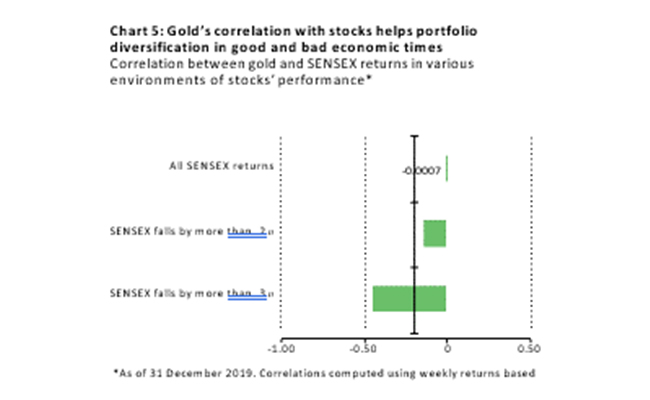
- Between 1981 and 2019, when there was extreme inflation (higher than 6%), gold prices generally increased at the rate of 11.5%.
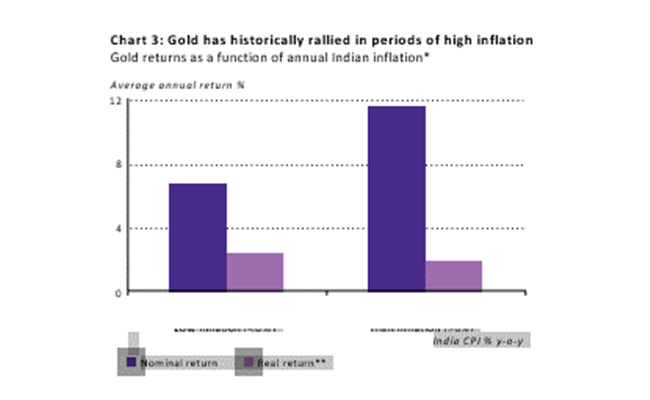
This shows that gold does not lose its value over the long-term. In fact, it helps to preserve and grow capital over the long-term.
- Combating deflation: Research findings at Oxford Economics suggest that gold will well during periods of deflation. The features that mark deflation – low-interest rates, curtailed consumption, reduced investment, and heightened financial stress – work together to propel the demand for gold in India.
Related:How should retail investors look at gold?
Gold valuation assures safety
Gold's unique valuation methodology ascertains its safety as an investment asset, as during periods of high economic growth, long-term returns are assured. Alternatively, during a downturn, it can mitigate your losses. Quaram, Gold Valuation Framework (GVF), allows investors to understand the drivers of gold and their impact on price performance, based on market equilibrium. This allows investors to determine gold's long-term returns
Gold does not conform to the common valuation framework used for stocks and bonds. Gold valuation is dependent on demand and supply. Valuation is intuitive and can be both strategic and tactical.
- Strategic valuation - considers two contradictory trends:
- Economic growth: Such periods boost the jewellery and technological sectors, along with long-term savings. These factors raise the demand for gold.
- Downturns: Such periods heighten risks and uncertainties for investors. For them, gold can act as a safe haven investment.
- Tactical valuation - depends on rival assets and gold performance:
- Opportunity cost: Investors will look at the price of competing assets, especially bonds (through interest rates), currencies, and compare them to gold prices.
- Momentum: Capital flows, positioning, and price trends can heighten or dampen gold's performance.
Related:Experts speak: How to allocate gold in your investment portfolio
Gold market is highly liquid in nature
The global gold market is large and highly liquid. In fact, it is larger than several major Indian financial markets, including bonds and stocks. This can be gauged from the trading volumes across global exchanges in 2019:
- Gold averaged Rs 10.3 trillion daily
- Over-the-counter spot and derivatives contracts stood at Rs 5.5 trillion
- Gold futures stood at Rs 4.6 trillion.
Indian trading volumes in gold were also substantial. MCX contributed Rs 61 billion daily, and gold-backed ETFs trading stands at an average of Rs 18 million per day.
These volumes highlight the ease with which gold can be bought and sold at any given point in time. Also, gold is a scarce commodity and a highly liquid one, so it has evolved into a mainstream investment globally.
Related:How gold investments have changed in the past 30 years
Gold as a strategic investment tool
Gold is a multi-faceted investment. Today, it is viewed as a complentary optionto traditional stocks and bonds since it ensures higher risk-adjusted returns and healthy portfolio diversification. The demand for gold as an investment has expanded by 14% every year since 2001. Consequently, Indian gold prices in the domestic market have risen eightfold over the same period
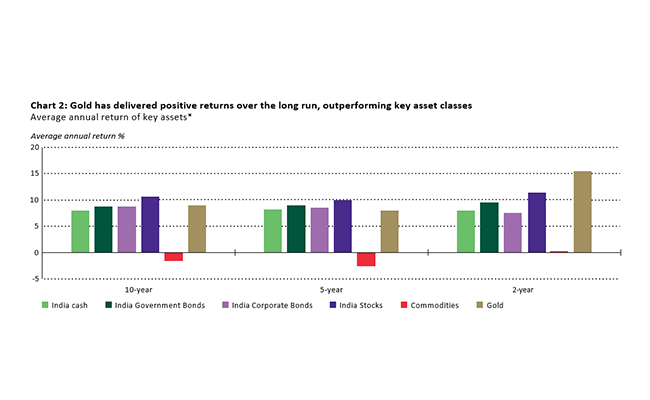
Several factors have led to gold becoming the go-to investment option:
- Emerging Markets:Economic growth in emerging markets, especially China and India, led to the expansion of the consumer base of gold; the investor base grew as a result.
- Gold ETFs:After the launch of the first gold-backed ETF in the US in 2003, access to the gold market became easier. Its relevance as a strategic investment and efficiencies (trading and storage) increased.
- Global Crises: Effective risk management came under focus in the wake of various economic crises across the world.
- Monetary policies:Low-interest regimes across the globe highlighted the long-term returns of gold
- Central bank demand:Central banks use gold as a foreign reserve and as a safe asset for diversification. Its positive investment attributes have contributed to the surge of interest in gold among central banks across the world.
Related:How can gold be your friend during financial crises?
Effective portfolio diversifier:An analysis of the 10-year performance of a hypothetical Indian average pension fund portfolio found that adding 5-10% of gold to a portfolio would have increased risk adjusted returns.
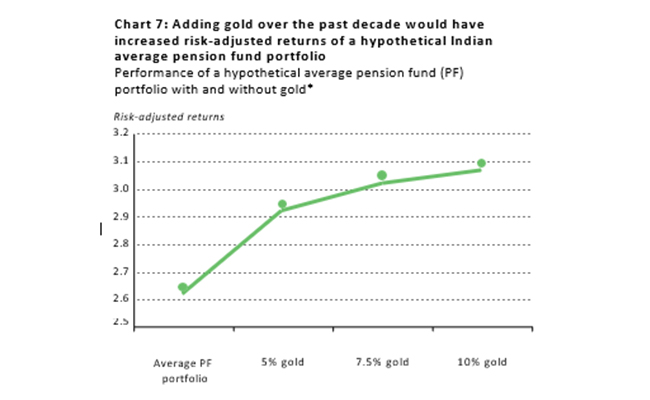
- Commodity investment: Gold's unique position as a consumer commodity makes it part of the broad commodity complex and a component of the commodity index. Over a two-decade period from 1999 to 2019, gold has outperformed all broad-based commodity indices and individual commodities. It has delivered the highest returns – a little under 12% annually.
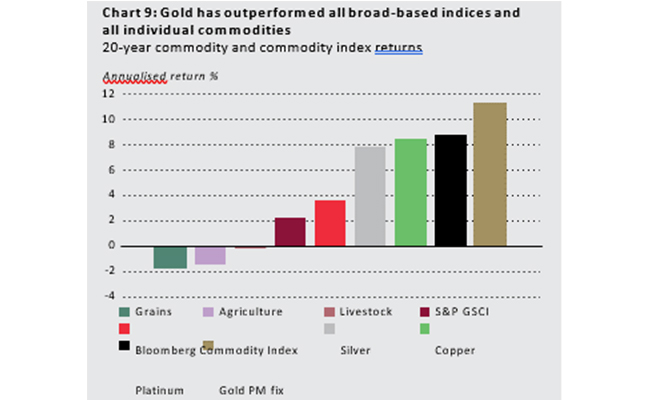
In a league of its own, gold is a holistic, dependable, and versatile investment option, which makes it a safe-haven asset.











